How to Create Custom Patterns
VIDIZMO lets you create custom patterns to define personally identifiable information (PII) entities for the VIDIZMO Indexer. These patterns are applied when Custom PII is selected as a detection type during content processing. This enables the VIDIZMO Indexer to detect and redact user-defined PII entities in transcriptions or on-screen text (via OCR) from your content.
You define Custom PII with one of three methods:
- Word List – Redact specific words or phrases you provide.
- Regular expression (regex) – Redact text that matches a pattern.
- Context words with regex – Redact regex matches that appear near specific context words.
See Understanding PII Detection and Redaction using VIDIZMO Indexer to learn more.
Prerequisites
- Ensure you're part of a group with Redaction feature permissions.
- In VIDIZMO Indexer settings, select Custom PII under Insights to include your entities in detection and redaction. See Configuring VIDIZMO Indexer for PII Detection and Redaction
Access Custom Patterns
- Open the action menu (top-left).
- Expand Admin.
- Select Portal Settings.
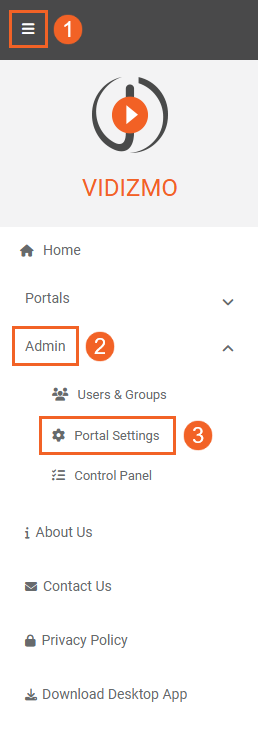
- Go to Library.
- Select Custom Patterns.
- Select Add New to begin creating a pattern.
- Select Custom Pattern Store to browse and add pre-built global patterns. For instructions, see Add a Custom Pattern from Store.
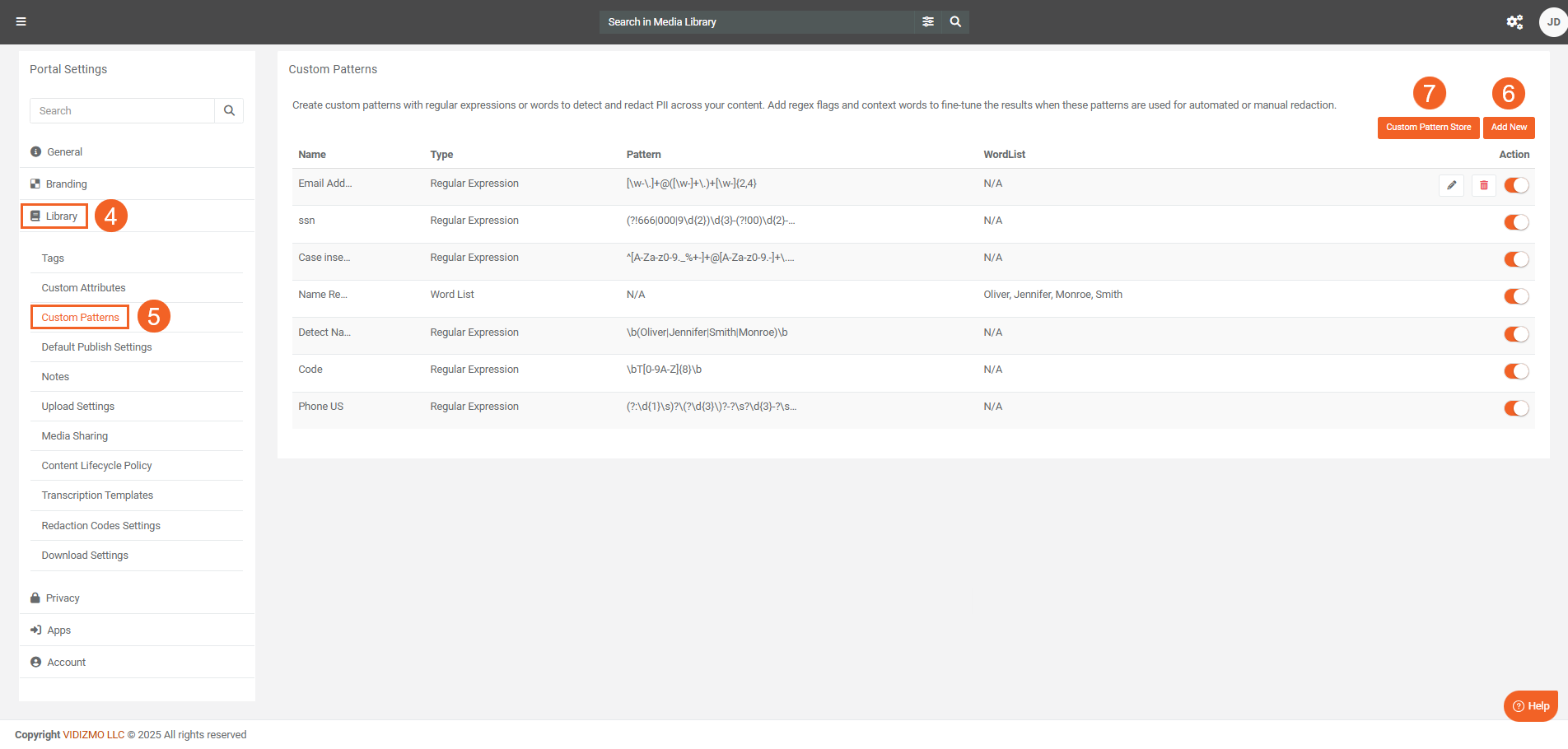
- In the Add Custom Pattern window, choose a Pattern Type:
- Regular Expression
- Word List
- Context Words with Regex
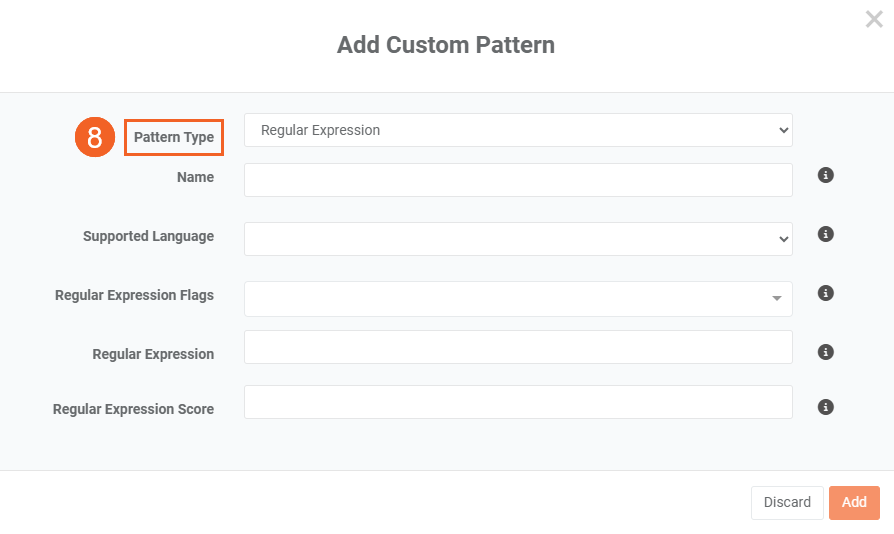
Regular Expression
Use a regex pattern to match structured text such as IDs, codes, or formatted numbers.
- Name: Enter a name for the entity.
- Supported Language: Select the target language.
- Regular Expression Flags (optional): Select any needed modifiers. See Regular Expression Flags.
- Regular Expression: Enter the pattern to match.
- Regular Expression Score: Enter a value from 0.01 to 1.00. The VIDIZMO Indexer uses this score to weight matches.
- Select Add to save the pattern.
Note: You can’t create a custom pattern with the same name as an existing predefined PII entity. Use a distinct, descriptive name.
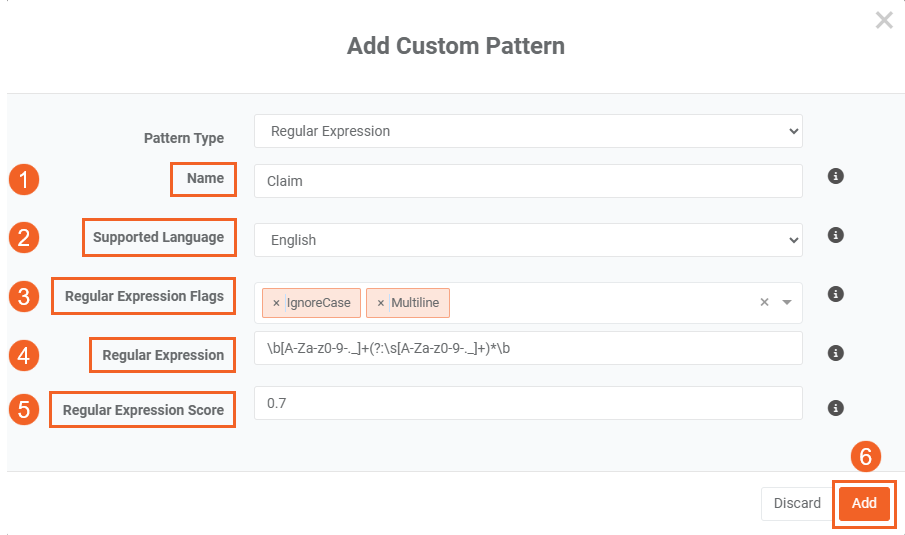
Word List
Use a word list when you know the exact words or phrases to detect.
- Name: Enter a name for the entity.
- Supported Language: Select the target language.
- Regular Expression Flags (optional): Select any needed modifiers. See Regular Expression Flags.
- Vocabulary Words: Type words or phrases to redact. Press Enter after each.
- Select Add to save the pattern.
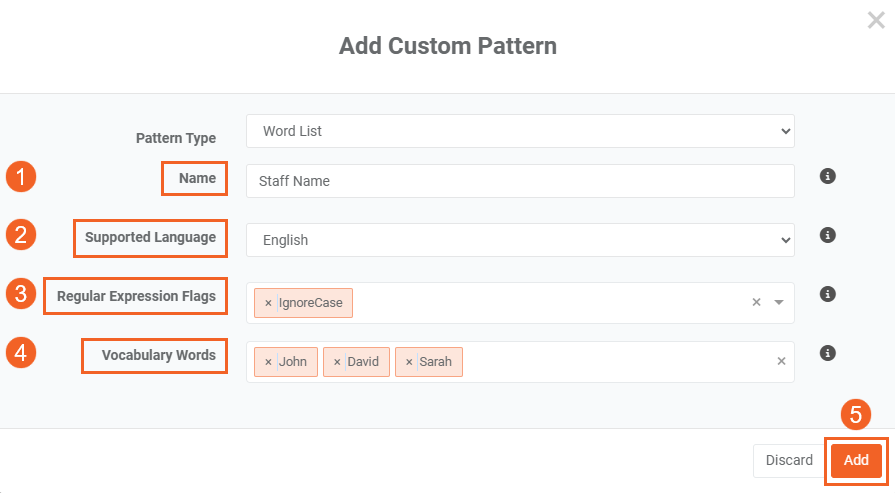
Context Words with Regex
Use this when a regex needs surrounding context to reduce false positives. The VIDIZMO Indexer finds regex matches, then keeps (or boosts) matches that appear near your context words.
- Name: Enter a name for the entity.
- Supported Language: Select the target language.
- Regular Expression Flags (optional): Select any needed modifiers. See Regular Expression Flags.
- Regular Expression: Enter the core regex pattern.
- Regular Expression Score: Enter a value from 0.01 to 1.00. The VIDIZMO Indexer uses this score to weight matches.
Note: When using context words in a custom pattern, set the confidence threshold higher than the base regex score.
If the threshold is set equal to or lower than the regex score (for example, 0.1), the text will always be detected, even without context words. Context words only increase the detection score (for example, from 0.1 to 0.5).
To make sure the pattern triggers only when a context word is found, use a low regex score (for example, 0.01) and a higher confidence threshold.
- Context Words: Type words or phrases that should appear near the match. Press Enter after each.
- Select Add to save the pattern.
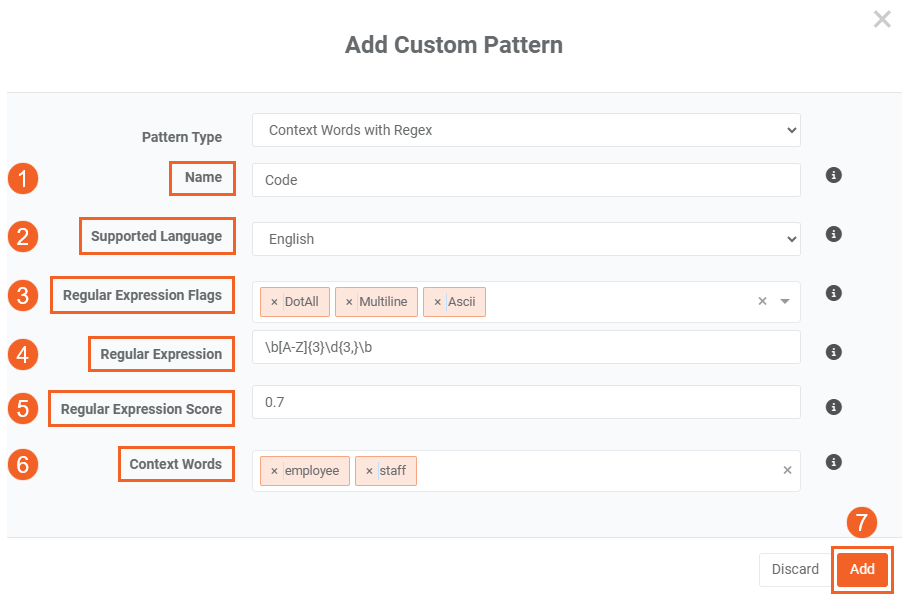
Add a Custom Pattern from Store
Use the Custom Pattern Store to add pre-built, global patterns provided by VIDIZMO. These patterns are curated by VIDIZMO and can be copied into your portal for use as-is or as a starting point you can edit.
- Select Custom Pattern Store.
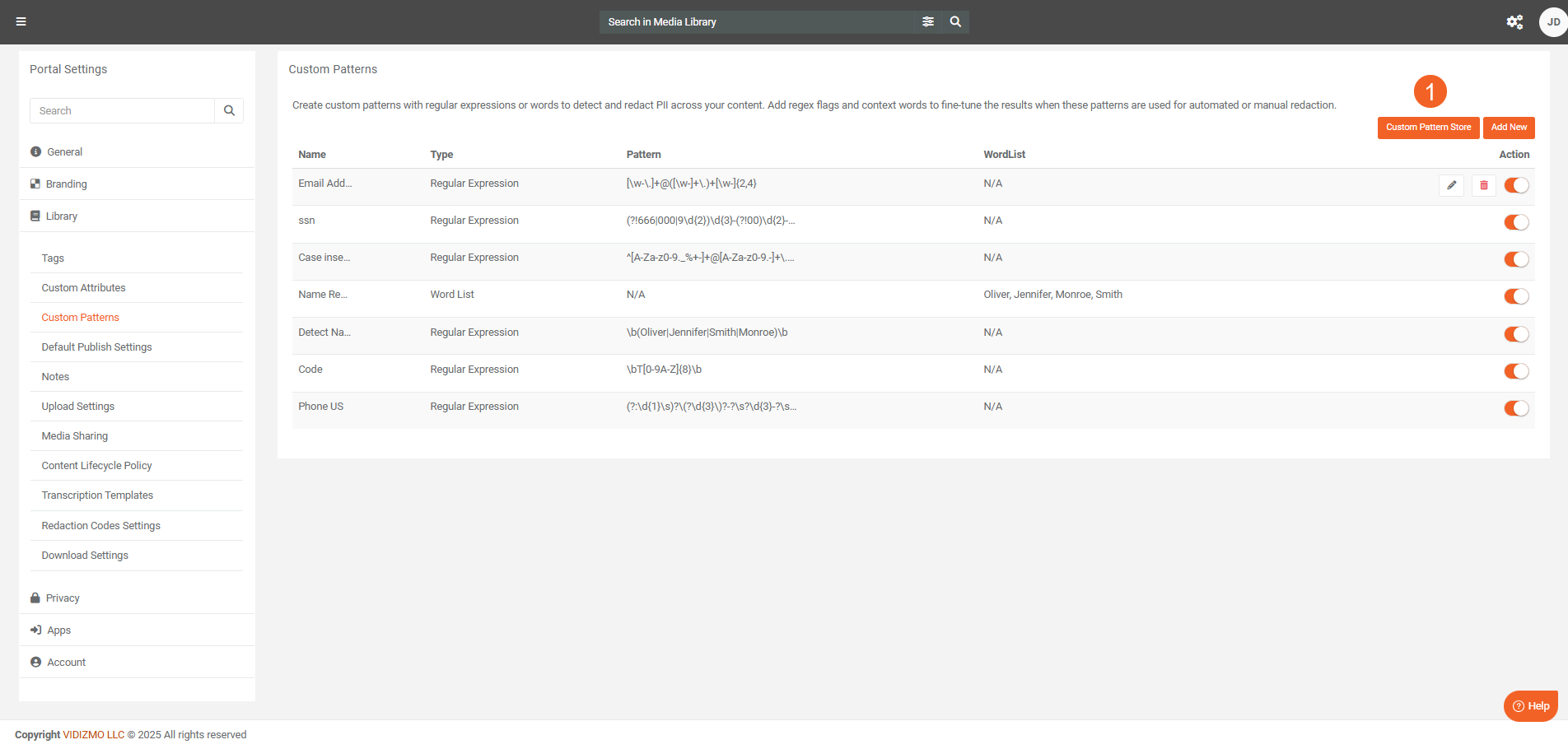
- Browse or search for a pattern, then select Copy Pattern.
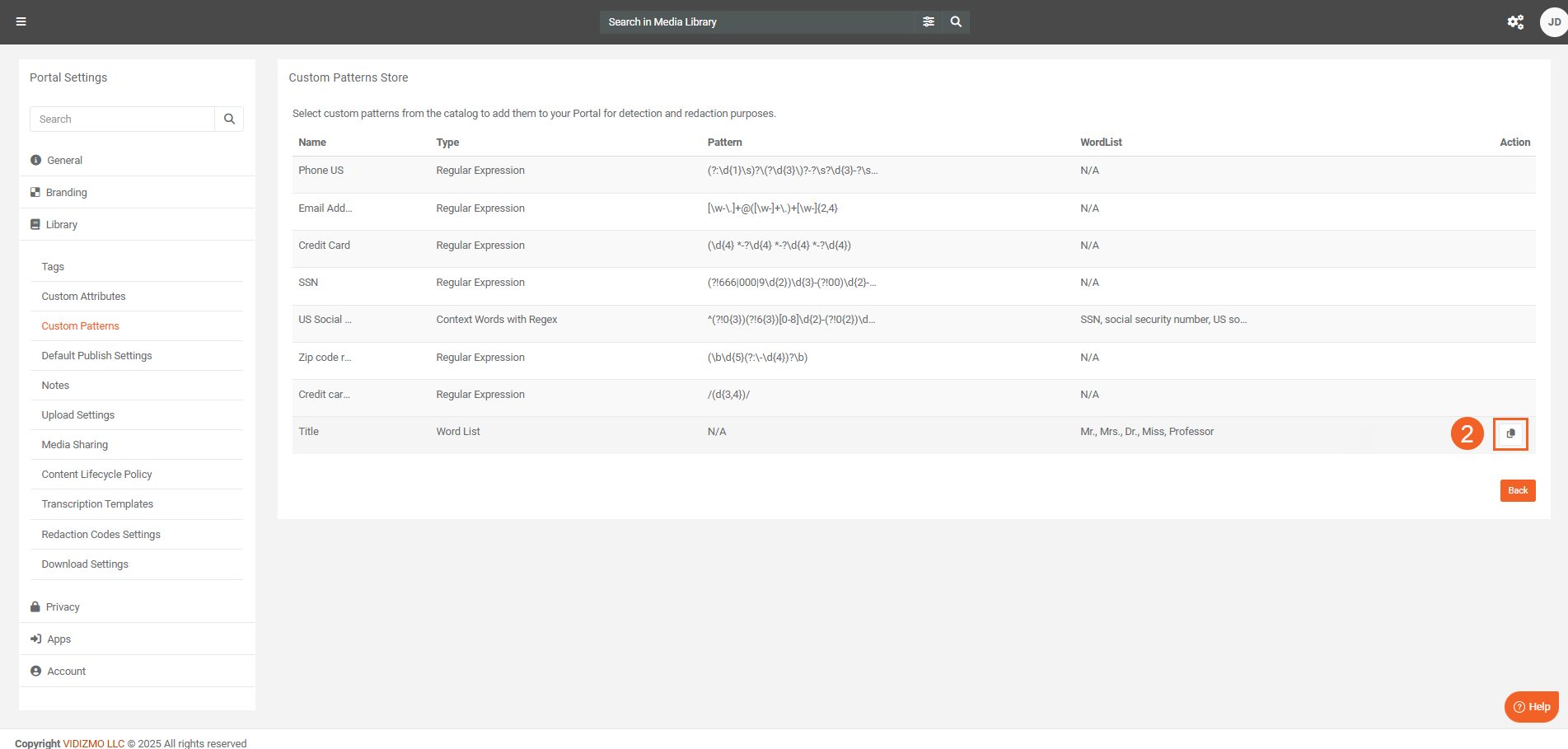
- The pattern is added to your main custom patterns page and is ready to use.
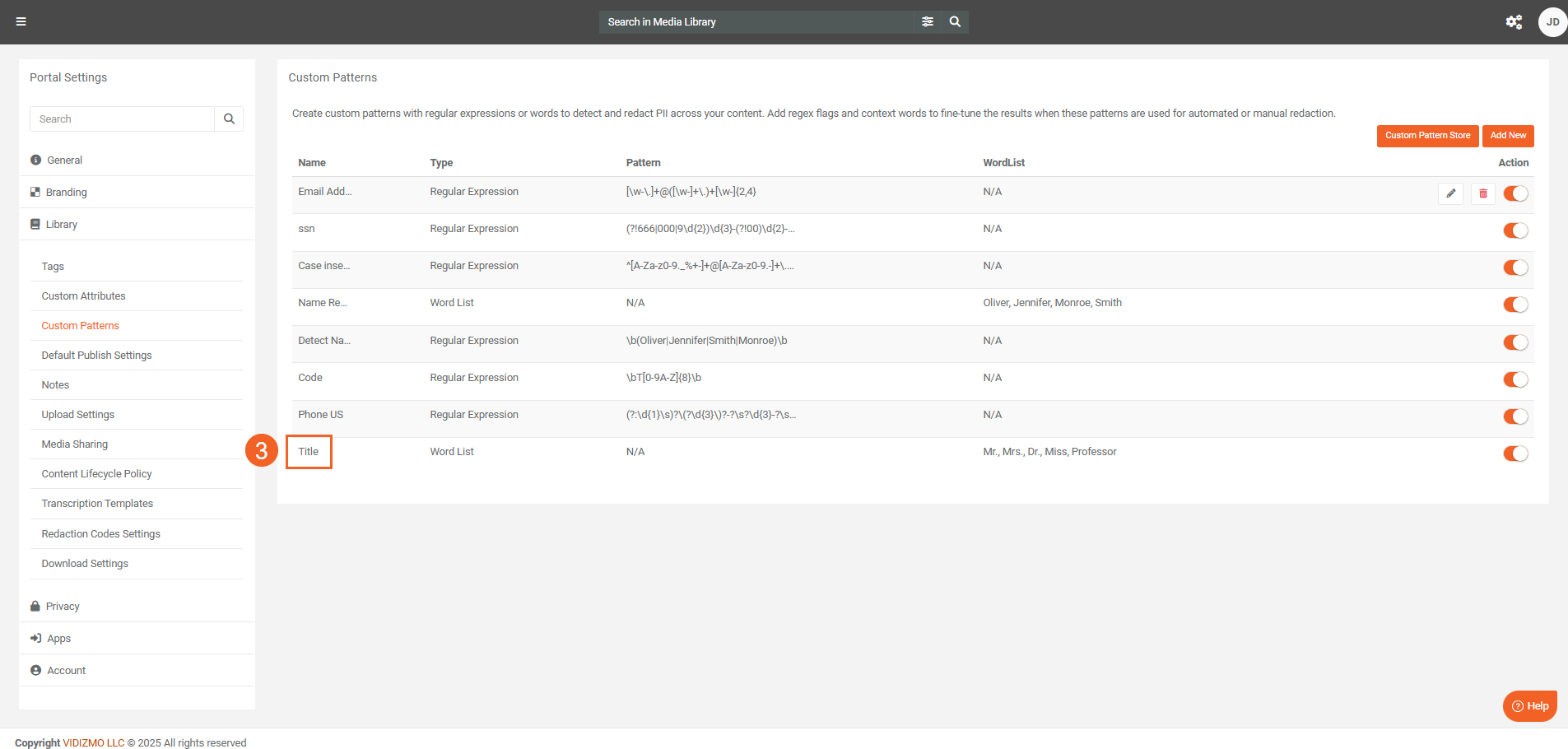
Manage Custom Patterns
Hover over a pattern to reveal actions:
- Edit: Update the pattern.
- Delete: Remove the pattern.
- Enable/Disable: Use the toggle to turn the pattern on or off. Disabled patterns aren’t used by the VIDIZMO Indexer when Custom PII is selected
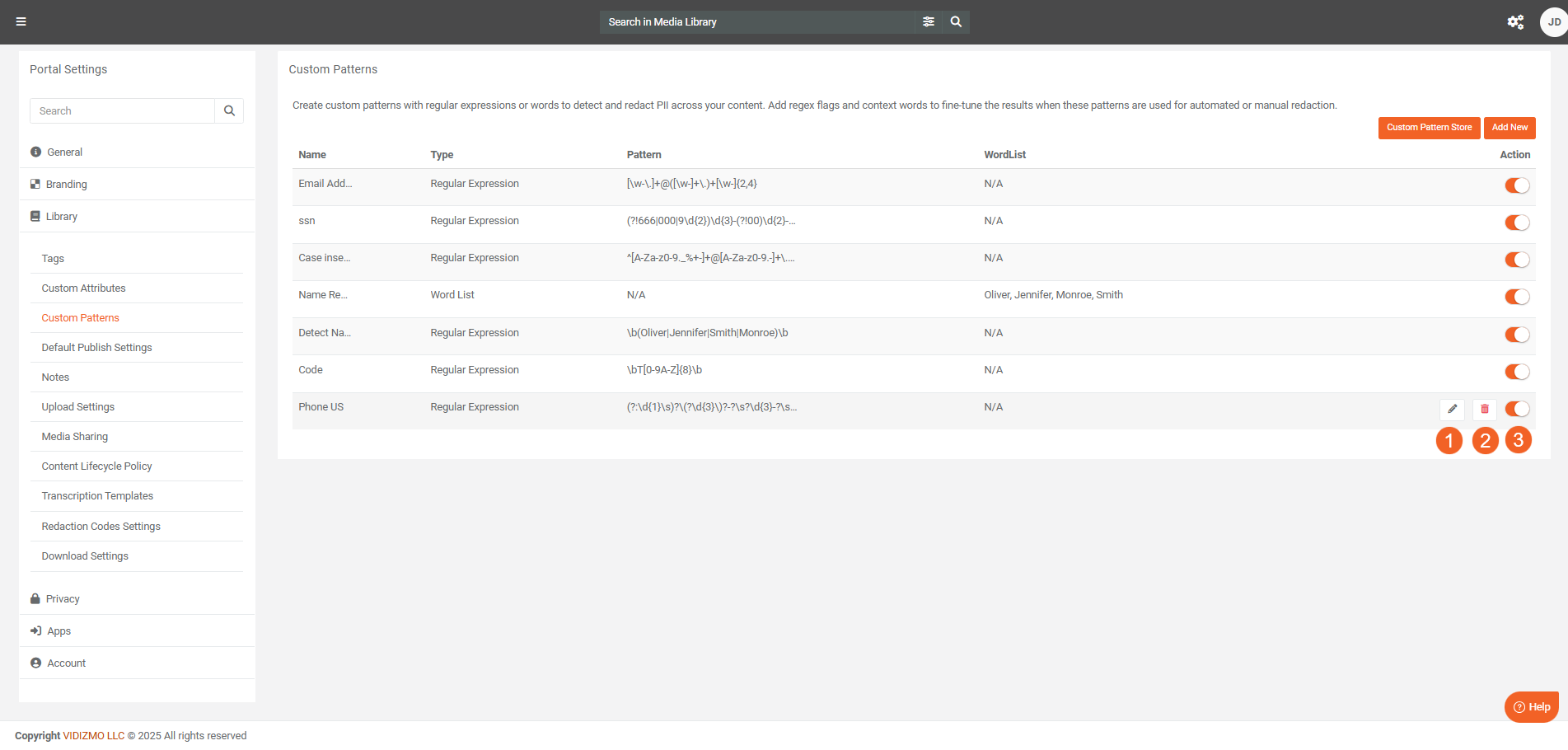
Regular Expression Flags
Regular expression flags control how matching behaves for your custom PII. Regex flags apply to custom patterns using both the regex and vocabulary (Word List).
Note: Turn on only the flags you need. Extra flags broaden matches and can increase false positives.
For Context Words with Regex, flags apply to the regex only. They don’t change how context words are matched.
ASCII
What it does
Uses ASCII-only rules for character classes like \w, \b, \d, and \s. Non-ASCII letters (for example, é, ß, ع) are not treated as letters.
Use when You need predictable, English-only matching—for example, U.S. IDs that must contain only A–Z, a–z, 0–9, and underscore.
Caution Do not enable if you expect names or text with accented or non-Latin characters.
Example
Pattern: \b\w+\b
Flags: ASCII
Text: "Renée"
Matches: "Ren" (the "ée" portion is not matched as word characters)
IgnoreCase
What it does Makes matching case-insensitive.
Use when Case does not matter—product codes like ab-123 vs AB-123, names like Ali vs ALI.
Example
Pattern: \binvoice\b
Flags: IgnoreCase
Text: "Please send the INVOICE today; the invoice is overdue, and another Invoice will follow."
Match: INVOICE, invoice, Invoice.
Locale
What it does
Uses your system's locale (language/regional setting like de-DE, tr-TR) for what counts as a letter, digit, or word boundary rather than plain ASCII or default Unicode. This makes \b and \w follow locale rules.
Use when You work with legacy, locale-specific text that requires locale word breaks.
Caution Most modern content is Unicode; Locale is rarely needed. Prefer default Unicode behavior or ASCII for English-only. Avoid combining Locale with ASCII. Can influence case behavior when combined with IgnoreCase
Example
Pattern: \b\w+\b
Flags: Locale (fr-FR)
Text: "Le naïve café is nearby."
Matches: Le, naïve, café, is, nearby
Under ASCII-only rules, \w+ would split naïve to na and café to caf. Locale treats ï and é as letters.
Multiline
What it does
Treats the text as multiple lines. Anchors apply per line instead of only at the start or end of the entire text. ^ matches the start of each line; $ matches the end of each line.
Use when Scanning multi-line text like logs or CSVs.
Example
Pattern: ^ERROR:\s.*$
Flags: Multiline
Text:
INFO: startup ok
ERROR: disk full
WARN: retrying
ERROR: permissions missing
Matches: ERROR: disk full , ERROR: permissions missing
DotAll
What it does
Makes the dot . match any character, including new lines. Without the DotAll flag, the . character doesn't cross line breaks.
Use when You need to capture a match that spans multiple lines (for example, paragraphs or multi-line fields like an address block).
Example
Pattern: Address:\s*(.?)\sEndAddress Flags: DotAll Text:
Name: Jane Smith
Address:
Apt 12B
1234 Market St
San Francisco, CA 94103
United States
EndAddress
Phone: (415) 555-0199
Matches:
Apt 12B
1234 Market St
San Francisco, CA 94103
United States
Creating Custom Patterns from Studio Space
If you’re redacting a document in Studio Space, you can create new custom patterns. See How to Perform Document Redaction in VIDIZMO for more details.
Note: Document redaction in Studio Space currently supports Regular Expression patterns only. Word list and Context Words with Regex aren’t available.
To create custom patterns from Studio Space:
- On a document’s overflow menu, select Redact with Studio.
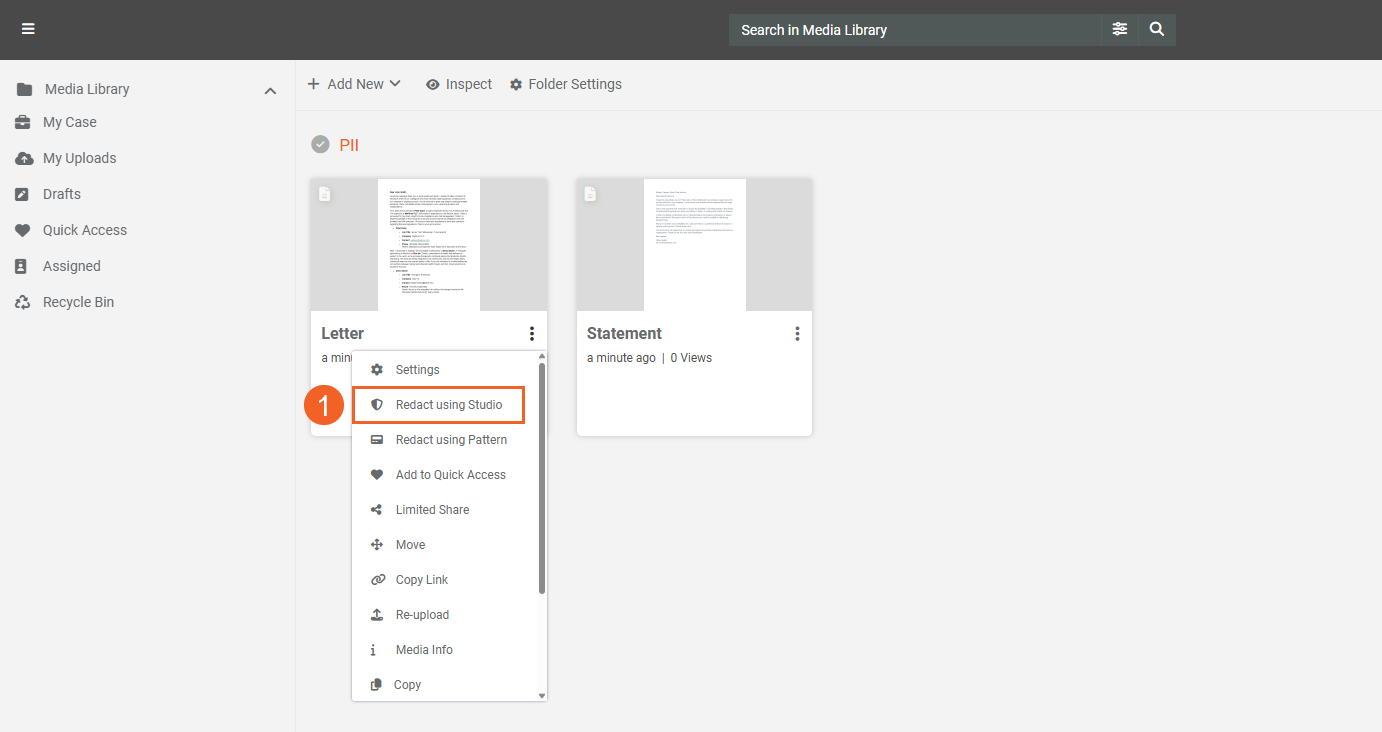
- In Studio Space, select the filter icon.
- Select Patterns.
- Select Add New (at the bottom of the list).
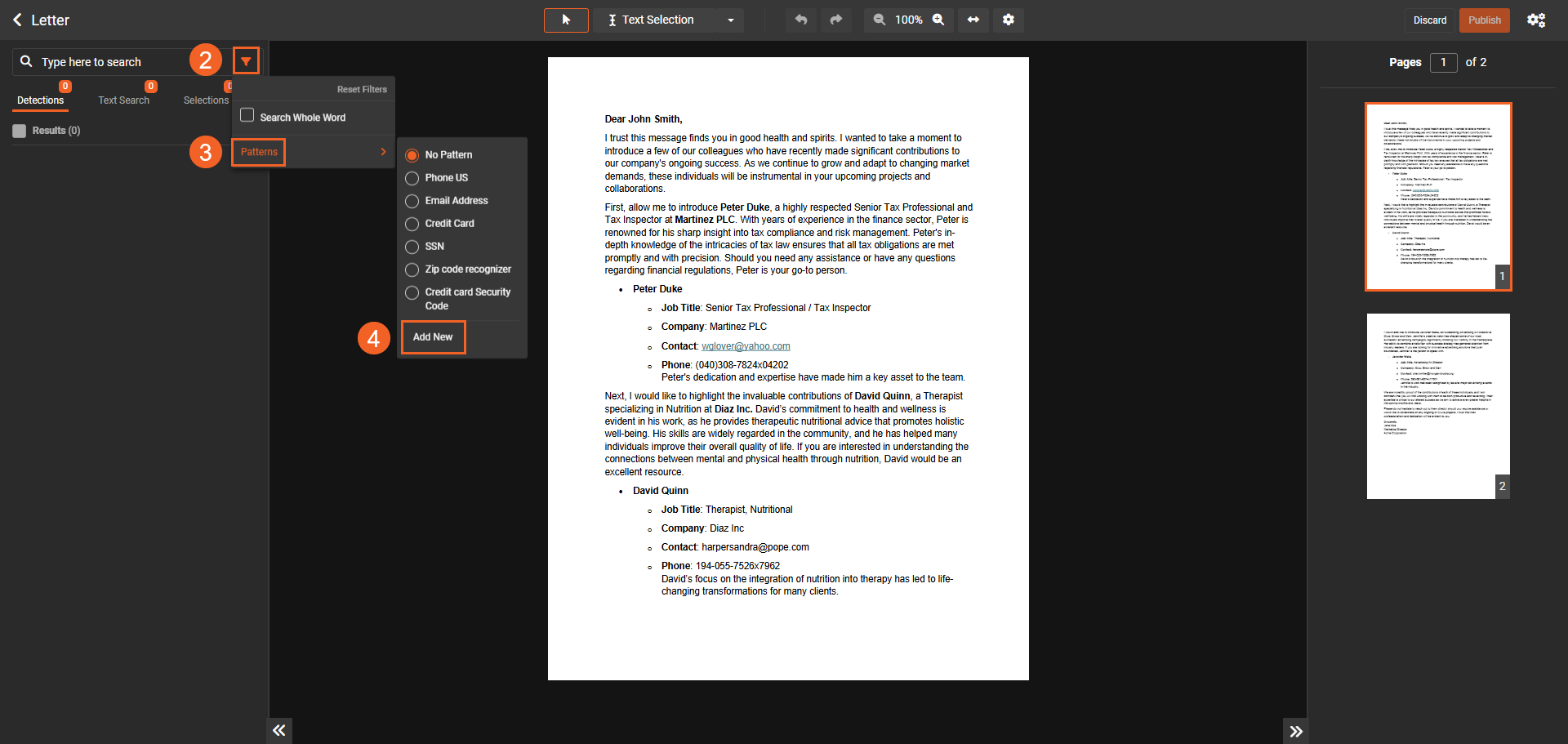
- On the Custom Patterns screen, all existing regex-based custom patterns are listed. Select Add New to add a new pattern.
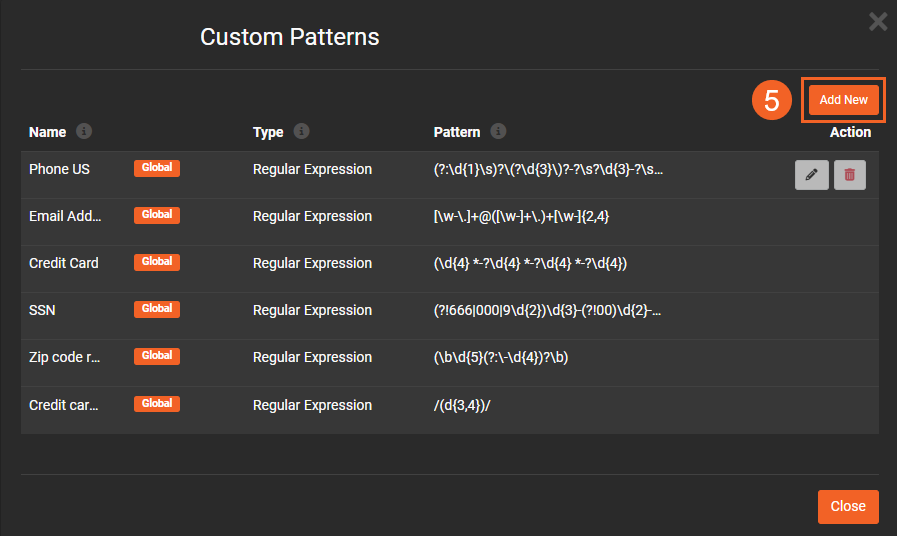
- Enter the details, then select Add to create the pattern.
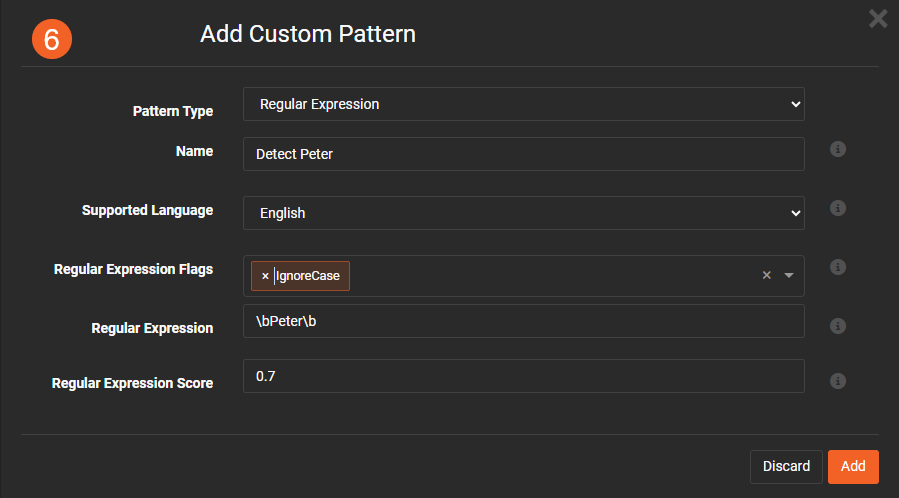
- Your new pattern appears on the Custom Patterns screen.
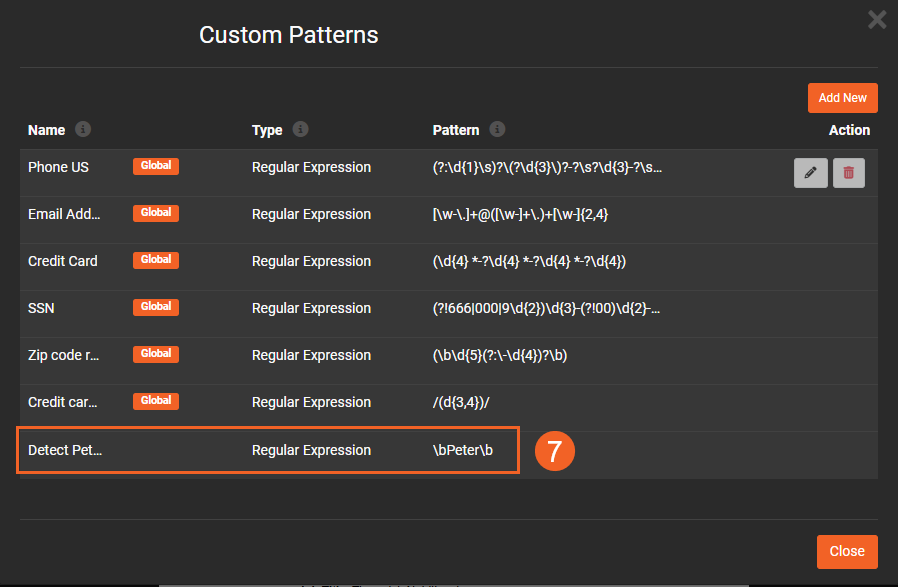
- In the Pattern drop-down, choose your new pattern to highlight matching text in the document.
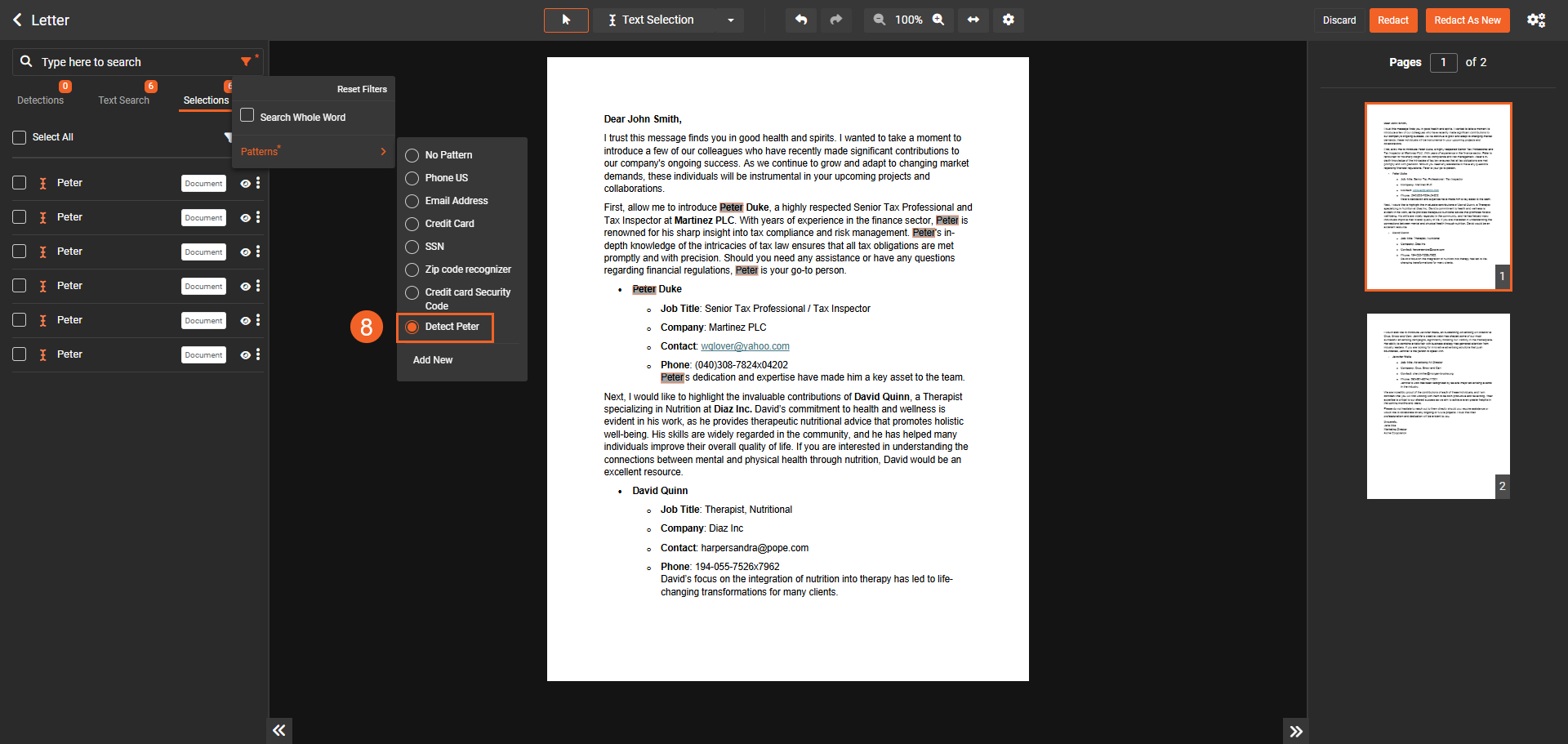
See How to Perform Document Redaction in VIDIZMO for details.
Troubleshooting
My match missed words with accents
- Turn off ASCII, or avoid
\wand match explicit ranges.
My ^ anchor only matched once.
- Turn on Multiline so
^and$work per line.
My pattern stops at line breaks.
- Turn on DotAll so
.matches newlines.
Case didn’t match.
- Turn on IgnoreCase, or use explicit ranges like
[A-Za-z]